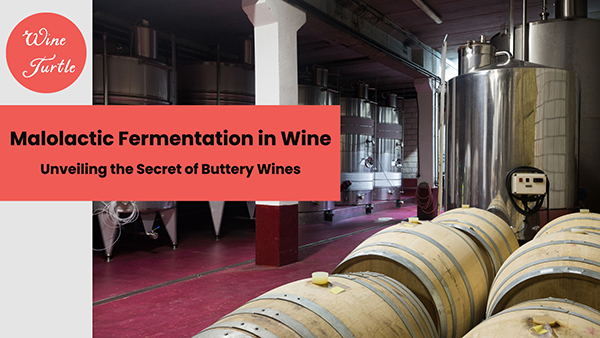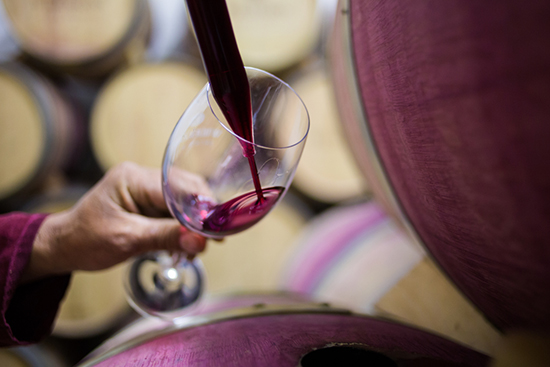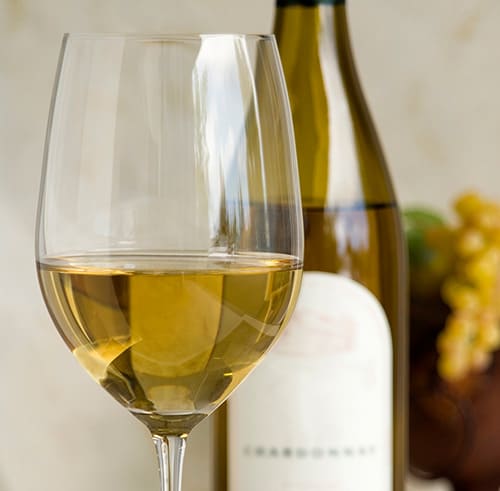Malolactic Fermentation in Winemaking [Ultimate Guide]

Today, we're delving into the realm of malolactic fermentation in winemaking.
This guide will illuminate the science behind this transformative process, its role in shaping the character of your favorite wines, and why winemakers across the globe swear by it.
What is Malolactic Fermentation?
Malolactic fermentation, often abbreviated as MLF, is a secondary fermentation process that occurs in winemaking.
Unlike the primary fermentation that converts grape sugar into alcohol, MLF is a bacterial process that transforms sharp malic acid, naturally present in grape must, into softer lactic acid.
This process is facilitated by a family of bacteria known as Oenococcus oeni, which thrive in the acidic environment of wine.
The result of this transformation is a reduction in the wine's acidity and an increase in its complexity and stability.
It's this process that imparts the creamy, buttery notes to wines, particularly noticeable in certain styles of Chardonnay.

Why Use Malolactic Fermentation in Winemaking?
The decision to employ malolactic fermentation in winemaking is largely stylistic, influenced by the type of wine being produced and the desired flavor profile.
For wines like Chardonnay and Pinot Noir, MLF can add a rich, buttery complexity, enhancing the wine's mouthfeel and overall sensory experience. It can also increase the wine's microbiological stability, reducing the risk of spoilage from unwanted bacteria.
On the other hand, for wines where a crisp, fresh acidity is desired, such as Sauvignon Blanc or Riesling, MLF is often avoided. This helps to preserve the wine's bright, fruity character.
In essence, malolactic conversion is a powerful tool in a winemaker's arsenal, allowing them to sculpt the final profile of their wine, creating a symphony of flavors that dance on the palate.
How Does MLF Affect the Taste of Wine?
The transformation of malic acid into lactic acid not only alters the wine's acidity but also introduces new flavors and aromas.
These are the ways that MLF is generally regarded to impact the taste and structure of wine:
Reduction in Acidity
Malic acid, found naturally in grapes, is a stronger more tart acid than lactic acid.
When MLF occurs, the conversion of malic acid to lactic acid results in a decrease in the overall acidity of the wine, making it taste less tart and more smooth.
Depending on the type of wine, some winemakers may choose to only have a small portion of the wine undsego MLF so that some tart character is kept in the wine.
Buttery and Creamy Notes
One of the most notable impacts of MLF is the introduction of a creamy, buttery character to the wine.
This is due to the production of diacetyl, a byproduct of MLF, which is often associated with the flavor and aroma of butter (in low concentrations it imparts toasted notes).
This is particularly noticeable in Chardonnay, where MLF can give the wine a rich, buttery mouthfeel.
Increased Complexity
MLF can add complexity to a wine, introducing new flavors and aromas that weren't present before. This can include notes of baked bread, nuttiness, and even a slight yoghurt-like tang.
Enhanced Stability
While not directly related to taste, MLF can increase the microbiological stability of the wine. This means the wine is less likely to spoil or develop off-flavors due to unwanted bacterial activity.
Improved Mouthfeel
The reduction in acidity and the introduction of creamy, buttery notes can enhance the wine's mouthfeel, making it feel more round, full, and lush on the palate.
This effect can also be reached by aging the wine on its lees.

Which Wines Undergo Malolactic Fermentation?
Malolactic fermentation is not exclusive to any one type of wine, but rather, it is a tool that winemakers can choose to use based on the style and flavor profile they are aiming to achieve.
The wines that most commonly use malolactic fermentation are the following:
The Malolactic Fermentation Process
While malolactic fermentation can occur naturally, many winemakers choose to initiate this process intentionally to ensure it happens under controlled conditions and to achieve a specific style or flavor profile.
The most common way to initiate MLF is by adding a culture of Oenococcus oeni, the bacteria responsible for MLF, directly to the wine after the primary alcoholic fermentation has completed.
These bacteria are usually purchased in a freeze-dried form and are rehydrated before being added to the wine.
For MLF to occur, certain conditions need to be met.
The wine needs to be at a suitable temperature (typically between 15-20°C, though this can vary depending on the strain of bacteria), and the pH needs to be within a range that the bacteria can tolerate (generally above 3.1).
Additionally, there needs to be sufficient nutrients available for the bacteria, and the SO2 levels need to be low enough not to inhibit bacterial activity.
Some winemakers choose to initiate MLF at the same time as the primary alcoholic fermentation, a process known as co-inoculation.
This can speed up the winemaking process and can also help to prevent the growth of unwanted bacteria by quickly establishing a dominant population of MLF bacteria.
Once MLF has been initiated, it's important for winemakers to monitor the process.
This typically involves testing the wine for malic acid levels to see how the fermentation is progressing. Once the malic acid levels drop to near zero, MLF is considered complete.
How to Prevent Unwanted MLF
There are instances when malolactic fermentation can occur unintentionally, and this is often undesirable for certain styles of wine.
So, how do winemakers prevent unwanted MLF? Here are some common methods:
- Sulfur Dioxide (SO2) Addition: Sulfur dioxide is often used in winemaking for its antimicrobial properties. By adding SO2, winemakers can inhibit the growth of the bacteria responsible for MLF.
- Sterile Filtration: This process involves filtering the wine to remove any bacteria that could cause MLF. It's a physical method of ensuring that the wine remains stable and free from unwanted bacterial activity.
- Refrigeration: Lowering the temperature of the wine can slow down or stop the activity of MLF bacteria. This method is often used in conjunction with other techniques for maximum effectiveness.
- Lysozyme Addition: Lysozyme is an enzyme that can inhibit or stop MLF by breaking down the cell walls of the bacteria responsible for the process.
- Early Bottling: By bottling the wine soon after the primary fermentation has finished, winemakers can reduce the chance of MLF occurring. This is because the bottling process often involves filtration and the addition of SO2, both of which can help to prevent MLF.
Alternative Malolactic Bacteria
While Oenococcus oeni is by far the most commonly used bacteria for malolactic fermentation (MLF) in winemaking, research has shown that other strains of lactic acid bacteria can also perform this process.
For instance, a 2015 study titled "Emerging Trends in the Application of Malolactic Fermentation" discusses the growing trend of using bacteria other than Oenococcus oeni for MLF.
This includes strains such as Lactobacillus and Pediococcus, which can also convert malic acid into lactic acid, albeit usually at a slower rate and often with different sensory outcomes.
Interestingly, there's also research exploring the use of certain yeast strains for malic acid degradation. A 2016 study titled "Selected Schizosaccharomyces Pombe Strains Have Characteristics That Are Beneficial for Winemaking" discusses how the fission yeast Schizosaccharomyces pombe can consume malic acid, effectively performing a similar role to MLF.
Another yeast, Lachancea thermotolerans, is known to produce lactic acid, which can contribute to the deacidification of the wine.
However, it's important to note that while these alternatives exist, Oenococcus oeni remains the preferred choice for MLF in most winemaking scenarios due to its reliability and the desirable sensory characteristics it imparts to the wine.
Potential Problems When Wine Undergoes MLF
While malolactic fermentation (MLF) can enhance the complexity and stability of wine, it can also lead to some undesirable outcomes if not properly managed.
Here are a few potential issues that winemakers need to monitor:
- Biogenic Amines: According to this study, MLF can lead to the production of biogenic amines, which can have undesirable physiological effects when present in high concentrations. These compounds are produced when certain strains of lactic acid bacteria decarboxylate amino acids. If biogenic amine-producing strains are detected, winemakers are encouraged to inoculate with selected malolactic starters to replace the indigenous microflora.
- Altered Sensory Attributes: MLF can significantly alter the sensory attributes of a wine. While this can be desirable in some cases, it can also lead to undesirable outcomes if the resulting flavor profile does not align with the winemaker's intentions or consumer preferences.
- Potential for Spoilage: While MLF can enhance the microbiological stability of a wine, it can also introduce the potential for spoilage if the process is not properly managed. For example, if MLF is not completed before bottling, the wine can undergo refermentation in the bottle, leading to off-flavors and potentially causing the bottles to explode due to the carbon dioxide that is produced.
- Reduction in Acidity: While the reduction in acidity caused by MLF can enhance the smoothness and complexity of a wine, it can also lead to a wine that is perceived as flat or lacking in structure if the acidity drops too low.
I hope that quells your curiosity but if you have any questions please ask down in the comments section and I'll do my best to get back to you straight away!
